The Block - One of the earliest types of insulators
Reprinted from "Crown Jewels of the Wire", March 2002, page 30
Display "Something Old - Glass Blocks"
by Eloise Haltman,
Albuquerque, NM, September 2001
This type of insulator was one of the earliest used in this country. It was
designed in a way that it fit into a pole bracket or a crossarm, its protruding
lips holding it securely in place. The wire could be inserted through the bent
slot and into the center cavity where it was held in place. The offset groove of
the insulator prevented the wire from escaping and did not require the used of a
tie wire.

The CD 1006 (far left, top row) is from "the line built in 1846 by Henry
O'Reilly, under a contract for $12,000, increased afterward to $14,000, for a
line of one iron wire. No directions were given about insulation, of which there
seemed little knowledge. One curious order was issued. The wires were directed
to be covered with tar! The originator of that sublime conception is unknown!
In
conformity with the order, however, a newly-landed Scotchman was engaged, who,
with a tar bucket slung to his side, and a monster sponge in his hand, tarred
the wire as far as Wilmington, Delaware. There tar proved too much for him. He
went to sleep and never woke. We buried him there.
When he was gone no one would
take his place. Being then in charge of the men, I took the bucket and the
sponge and lathered the electric road to the Susquehanna. There O'Reilly made a
bonfire of my saturated garments. It was a sad business. All the tavern keeps on
that road long remembered the man with the tar bucket. At the town of North East
they would not give me a bed. As I sat one night on the end of a empty cider
barrel, in the bar-room of a small tavern, bewailing my fragrant condition, and
anxiously trying the cleansing qualities of sweet oil, the two plump daughters
of the hostess passed me with signs of unmistakable horror. From another from
soon came the exclamation: 'Oh, mother, how that fellow stinks!' How sweet,
thought I, is the Saxon language on the lips of a North East maiden!
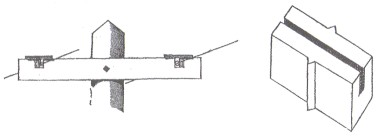
We insulated the wire as directed with bits of India rubber cloth wrapped
round the wire, and wedged in with plugs of Georgia pine. These soon tore out,
and, as soon as I had authority to act independently, little blocks of grooved
glass of fine quality were substituted." 1
These CD 1000s (second through seventh block on lower row) were located in an
old railroad depot in Gallatin, Tennessee about twenty years ago. They were
found in a wood box in one of the storerooms when the depot was being torn down.
They were made for use by one of two competing telegraph companies that
constructed lines between Louisville, Kentucky and New Orleans, Louisiana in 1847.
They were the Peoples Telegraph Company and the New Orleans and Ohio
Telegraph Company.
- - - - - - - - -
1 Account from American Telegraphic History, "The Magnetic Telegraph
Company".
The Block - One of the earliest types of insulators.
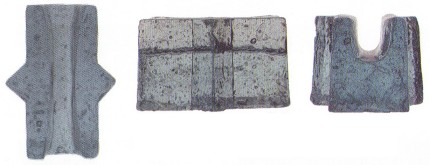
CD 1006 "Baby Block" with "V" center projections.
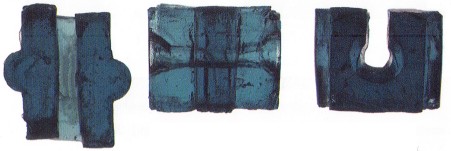
CD 1007 "Baby Block" with round center projections.
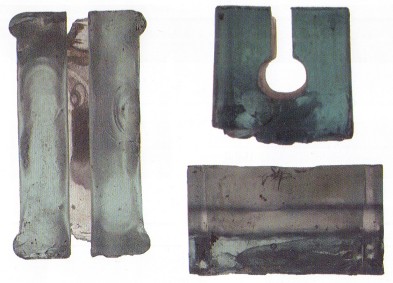
CD 1005 Small block with a straight wire groove.

CD 1008 A medium size block.
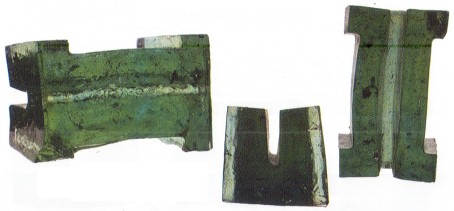
Base embossed "S.F. GLASS CO." -
A center groove straight through in aqua with green swirls.. No CD assigned.
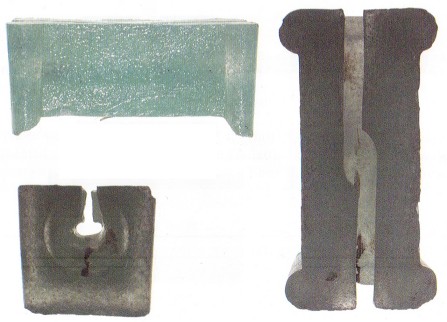
CD 1004 is a longer block type adapted for use in a crossarm.
Flash brings out the bubbly opaque aqua, while
backlighting gives the piece a
gray/green color.
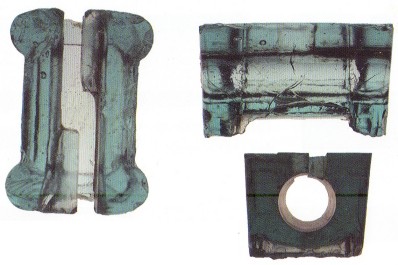
CD 1003 has a wire groove with the same diameter
end to end, and a shallow
coffin bottom base.
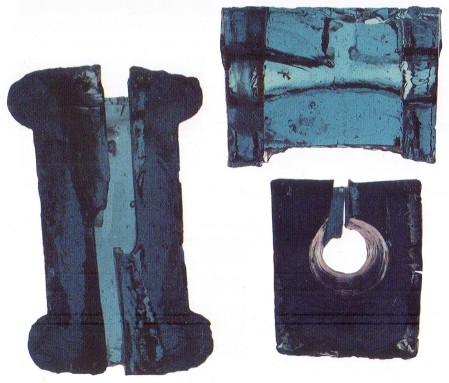
CD 1002 is a regular size block with flanged ends in the wire groove.
The
wire slot is "left handed" which is different from the conventional
"right handed" block configuration.
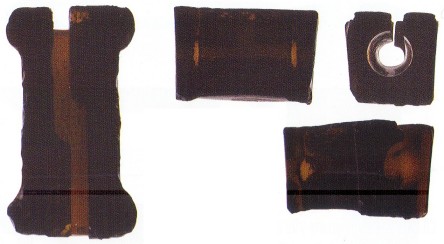
CD 1000 is a regular size block with flanged ends in the wire groove.
The
wire slot is a "right handed" configuration., and check out the
colors!
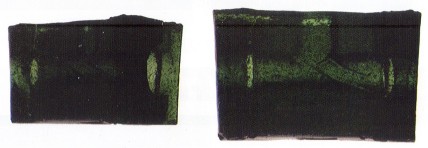
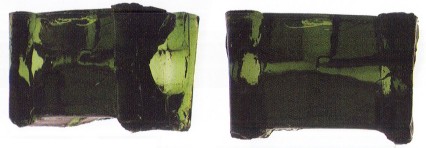
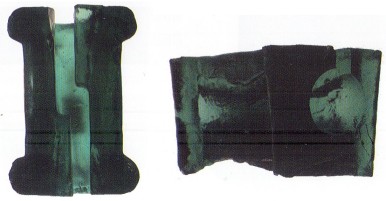
| 